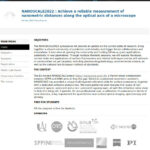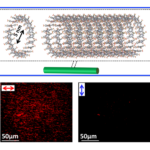Misc news
First student SPPIN retreat !
During the fall of 2022 a small group of SPPIN students spent a convivial weekend in the “Maison de Fer”, a rustic chalet in the Dampierre-en-Yvelines commune in the south of Paris. It was lovely to be able to spend a warm weekend between coll ...
NANOSCALE2022 – 6-8 April 2022
Our laboratory is co-organizing NANOSCALE2022 symposium at Campus Saint-Germain-des-Prés from 6 to 8 April 2022. This is the annual meeting of super-resolution microscopies (especially in the axial direction, along the microscope axis), with about te ...
Welcome to visiting professor Erdem Karatekin from Yale
SPPIN warmly welcomes Prof. Erdem Karatekin who is on sabbatical in the Membrane Dynamics team for 6 months. After obtaining a Ph.D. in Chemistry from Columbia University on the soft-matter physics and chemistry of polymerization reactions, Erdem d ...
The SPPIN welcomes Marc Guillon as new P.I.
In his Singular Imaging (SingIng) group, Marc will aim at developing novel imaging capabilities based on a in-depth study of singular optics and complex media. Marc’s group has emerged from within the SPPIN laboratory following the demand for de ...
STANISLAS PhD project selected by CNRS and U. Toronto
The CNRS and the University of Toronto selected a joint PhD-and research grant involving SPPIN’s team 1 (Oheim) and the laboratory of Molecular Biophysics at the Department of Biochemistry (Yip) at U Toronto. In the framework of this 3-year research coll ...
JacSue Kehoe
The SPPIN laboratory deeply regrets to announce the death of JacSue Kehoe on 25 june 2019, at the age of eighty-three. JacSue spent decades working with the neurons of Aplysia californica, studying the post-synaptic nerve response. Among many other things, ...
A thin layer of molecules aligned over macroscopic surface areas for the NANOSCALE project
Researchers around Adi SALOMON (team1) have succeeded in preparing controlled, thin layers of aligned J-aggregates (blue box) over macroscopic surface areas ‘bottom). These reference fluorescent samples, prepared on thin microscope coverslips are an impo ...
Call for contributions to Special Issue of Microscopy Research and Technique (Wiley) on Photobleaching and Photodamage
Medically efficient treatments often go along with unwanted side effects. In much the same manner, microscopic imaging at high spatio-temporal resolution pushes the limits by destroying fluorescent labels, affecting the biological process under study or ev ...








